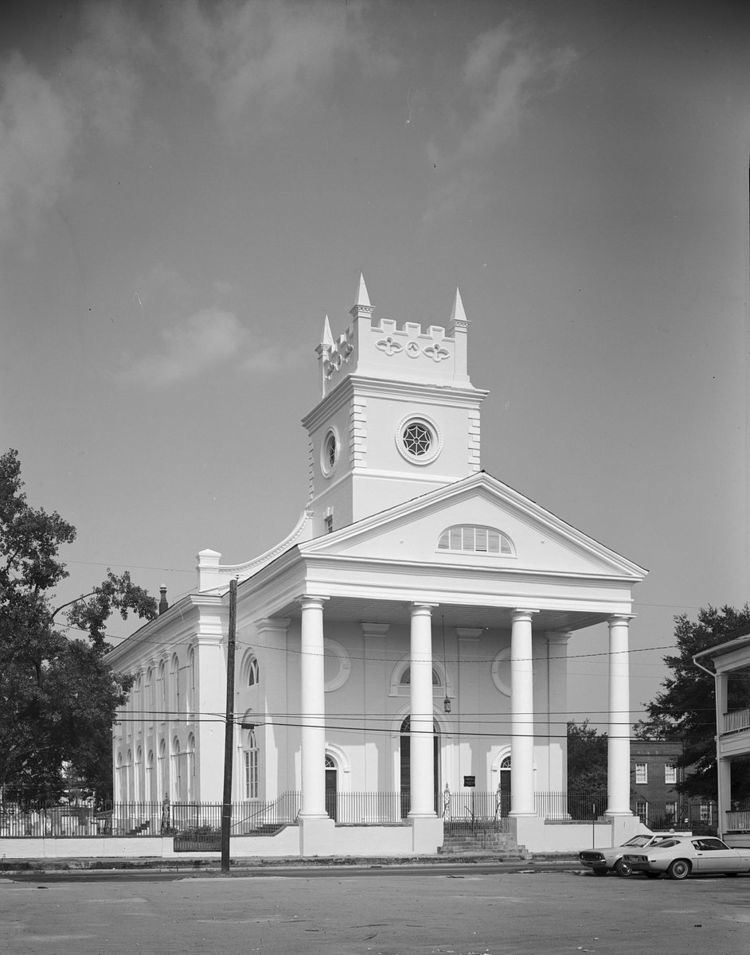Website www.your-cathedral.org Phone +1 843-722-7345 | Direction of façade West Ecclesiastical or organizational status Cathedral | |
 | ||
Address 126 Coming St, Charleston, SC 29403, USA Architectural style Gothic Revival architecture District Episcopal Diocese of South Carolina Similar St Philip's Episcopal Church, St Mary's Roman Catholic, Cathedral of Saint John the, St Michael's Episcopal, Old Bethel United Methodist Profiles | ||
The Cathedral Church of St. Luke and St. Paul is located in Charleston on Coming Street, in the heart of the College of Charleston campus. It is the cathedral of the Episcopal Diocese of South Carolina. It was originally known as St. Paul's Radcliffeboro.
Construction began in 1810. The architectural style is typical of the period, the interior being almost devoid of ornamentation with the exception of the chancel which, according to Dalcho the historian, is “richly painted, and ornamented with Corinthian pilasters having gilt capitals”. This description still applies today, as during the redecorating of the interior after the hurricane of 1989, the colors and applications first used in 1815 were employed as much as current means allowed.
The building was in continuous use during the Civil War, harboring congregations from those churches nearer the strongholds of the Union forces, whose cannons bombarded the city constantly. The church’s bell was dismantled and sent to Columbia to be melted down in support of the Confederate cause.
For the most part, the interior appears much as it did in 1815, a major exception being that of the stained-glass windows added later. In addition, the box pews were replaced in 1872 and the pulpit was moved from the middle aisle to its present location.
In 1949, the parish enfolded the congregation of St. Luke’s on Charlotte Street, long closely associated with St. Paul’s, and the first combined service was held on July 17, 1949. Later, the present building was designated the cathedral church for the Diocese of South Carolina and Bishop Gray Temple was officially “seated” here in November 1963.
The stained-glass windows in the apse of the sanctuary were installed in the fall of 1991 and, consistent with the post-hurricane restoration, are in the style of Sir Christopher Wren, the 17th century architect of St. Paul’s Cathedral, London. They were designed and constructed by Willett Studios of Philadelphia and portray, on the left and right, the patron saints of the cathedral (St. Luke and St. Paul) with the center window depicting the crucified Christ, together with St. Mary and St. John.
The building is known for its acoustical properties and is often sought by performing artists, particularly during the Spoleto Festival.
In 2009, the long-time dean, William McKeachie, announced his retirement and the vestry called the Reverend Peet Dickinson to serve as dean. The same year the new dean, vestry, and executive finance committee took the necessary moves to retire the debt accumulated from structural renovations to the historic church building.
The cathedral remains within the Protestant Episcopal Diocese of South Carolina, after their disaffiliation from the national Episcopal Church, in November 2012. There are services every Sunday at 7:45 am, 9:15 am and 11:15 am.
